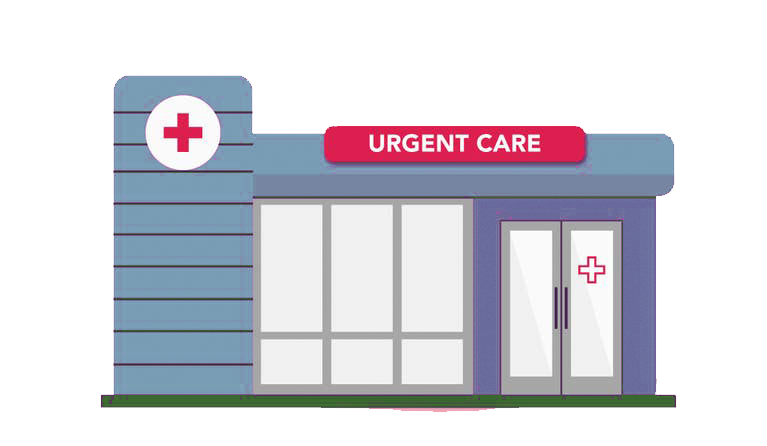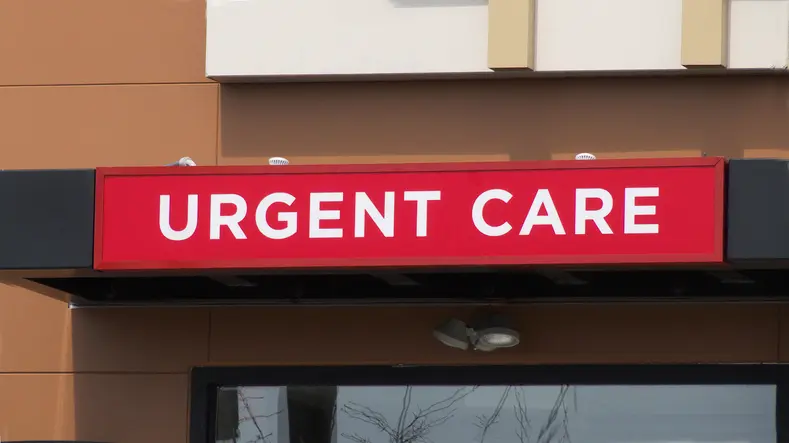Comprehending the Importance of Urgent Care Providers for Non-Life-Threatening Medical Issues
The significance of immediate care solutions for non-life-threatening medical issues can not be overemphasized, especially in today's health care landscape. By understanding the advantages of urgent care, such as decreased wait times and cost efficiency, one can much better value their function in person health and wellness administration.
What Is Urgent Care?
Immediate care refers to a classification of medical solutions designed to address non-life-threatening conditions that call for instant focus yet do not require a visit to the emergency situation room. These centers offer a bridge between primary treatment and emergency situation solutions, providing available medical care choices for individuals experiencing intense medical problems, such as small fractures, strains, infections, or serious health problems that occur unexpectedly.

The scope of solutions supplied by urgent care facilities can differ however typically includes therapy for common ailments like colds, influenza, and allergic reactions, in addition to minor injuries (urgent care). In addition, several immediate treatment centers provide preventative services, such as inoculations and physical examinations, to resolve wider health demands. By using a practical option for urgent clinical issues, these centers play a critical function in the healthcare continuum, guaranteeing that people get appropriate treatment when they need it most
Benefits of Urgent Treatment Solutions
Many individuals locate that using urgent treatment services supplies significant advantages over typical emergency room visits or waiting for a key care visit. One key advantage is the lowered wait times. Immediate treatment facilities usually have shorter wait durations, allowing clients to obtain timely medical interest when they require it most. This expedited care is especially handy for non-life-threatening conditions that need punctual intervention.
One more advantage is the extended hours of operation. Numerous urgent care centers are open evenings and weekend breaks, fitting people that might not have the ability to see their health care medical professional throughout normal workplace hours. This adaptability makes it less complicated for people to access care at their comfort.
In addition, immediate care solutions commonly use a cost-effective alternative to emergency rooms. Patients frequently face lower co-pays and total expenditures when looking for therapy for minor ailments at immediate treatment facilities as opposed to hospital emergency departments.
Finally, urgent treatment facilities are outfitted to manage a variety of non-life-threatening concerns, supplying a broad variety of services under one roofing. This thorough technique not only simplifies the treatment procedure however also boosts client complete satisfaction by supplying efficient and timely care.
Typical Problems Treated
What kinds of non-life-threatening conditions can people expect to obtain treatment for at urgent treatment centers? Immediate treatment facilities are outfitted to handle a vast range of usual medical problems that call for prompt interest yet do not position a prompt risk to life. These facilities generally treat problems such as small fractures, sprains, and pressures, offering essential look after injuries that take place during everyday tasks or sports.
Furthermore, people frequently look for therapy for breathing infections, consisting of colds, flu, and bronchitis, where prompt treatment can ease symptoms and stop problems. Skin disease such as rashes, insect bites, and small burns are also frequently resolved, as prompt care can alleviate pain and reduce the risk of infection.

Contrasting Urgent Care and Emergency Clinic

One significant difference waits times; urgent care centers generally have much shorter delay times contrasted to emergency situation spaces, which can be clogged with he has a good point even more essential instances. This efficiency allows clients to receive prompt therapy for their disorders.
From a monetary perspective, immediate treatment gos to have a tendency to be less pricey than emergency clinic check outs. Insurance coverage copays and out-of-pocket costs are often reduced at urgent treatment centers, making them an extra cost-effective choice for non-emergency scenarios.
How to Pick an Urgent Care Center
Selecting the ideal urgent care center can considerably boost the high quality of care gotten throughout a non-life-threatening medical problem. When choosing an urgent treatment facility, a number of vital elements need to be thought about.
First, assess the facility's certification and licensing. Search for facilities that are certified by identified organizations, as this suggests adherence to top quality standards. Next off, review the variety of services supplied. Some urgent care centers concentrate on specific areas, while others give extensive take care of various clinical concerns. imp source
Additionally, think about the place and hours of procedure. A conveniently located center with extensive hours can be vital for prompt treatment. It's also recommended to examine the facility's delay times and client testimonials, which can provide understandings right into the overall person experience.
Conclusion
In conclusion, urgent treatment solutions play a vital role in dealing with non-life-threatening clinical concerns successfully. By offering immediate interest for different conditions, these centers boost person access to timely care while minimizing the strain on emergency situation spaces. The benefits of immediate care, including extended hours and reduced expenses, make them a positive option for individuals looking for timely treatment. Ultimately, recognizing the value of immediate care facilities adds to improved medical care monitoring and individual contentment.
 By using a practical alternative for immediate his response medical issues, these centers play a critical duty in the medical care continuum, making sure that clients receive appropriate treatment when they require it most.
By using a practical alternative for immediate his response medical issues, these centers play a critical duty in the medical care continuum, making sure that clients receive appropriate treatment when they require it most.Numerous individuals find that utilizing immediate care services offers substantial advantages over conventional emergency area brows through or waiting for a main treatment visit. Several urgent treatment facilities are open evenings and weekends, suiting individuals who might not be able to see their primary care medical professional during normal workplace hours. Urgent care facilities are designed to deal with non-life-threatening problems, such as minor fractures, infections, and health problems, offering a practical option to emergency situation rooms for those in requirement of prompt care. Some urgent treatment centers specialize in certain locations, while others offer detailed care for various clinical concerns.